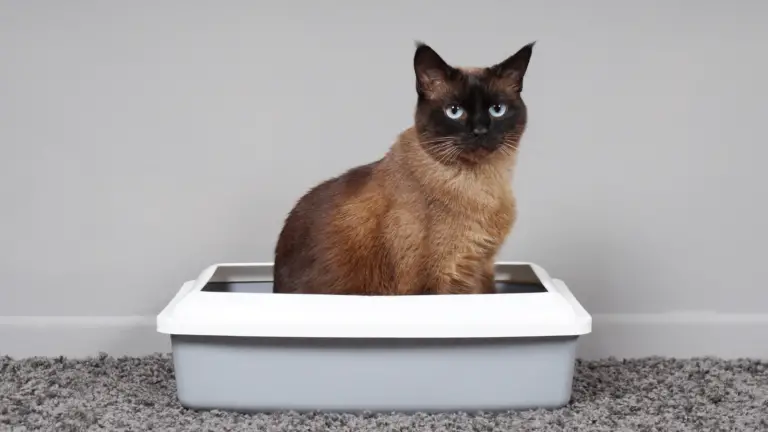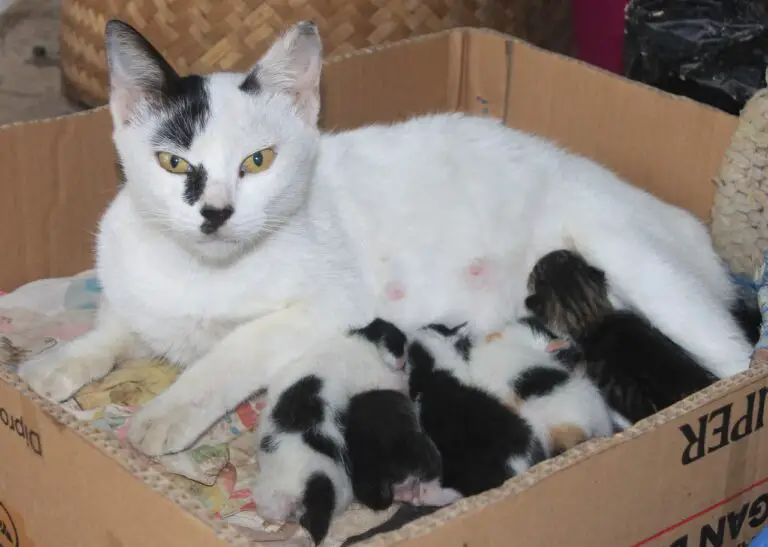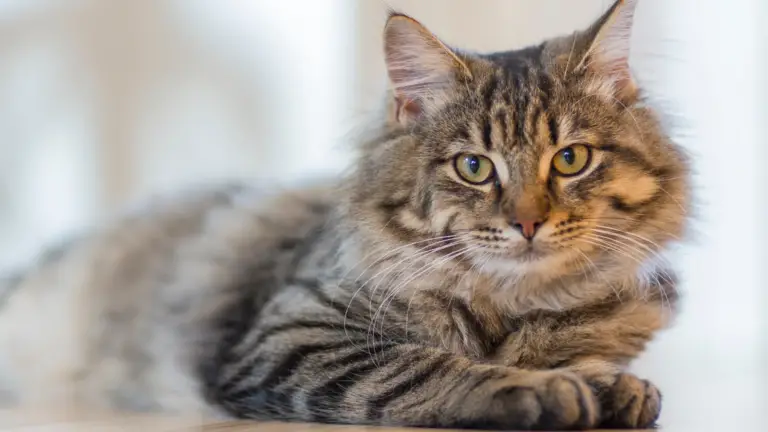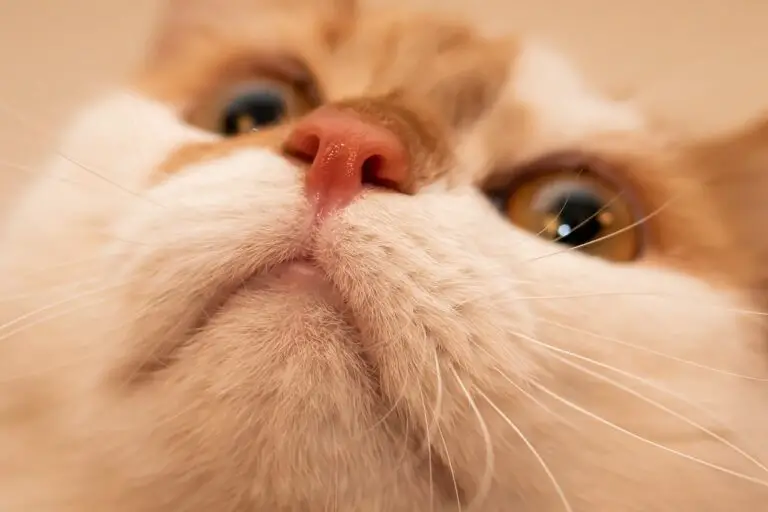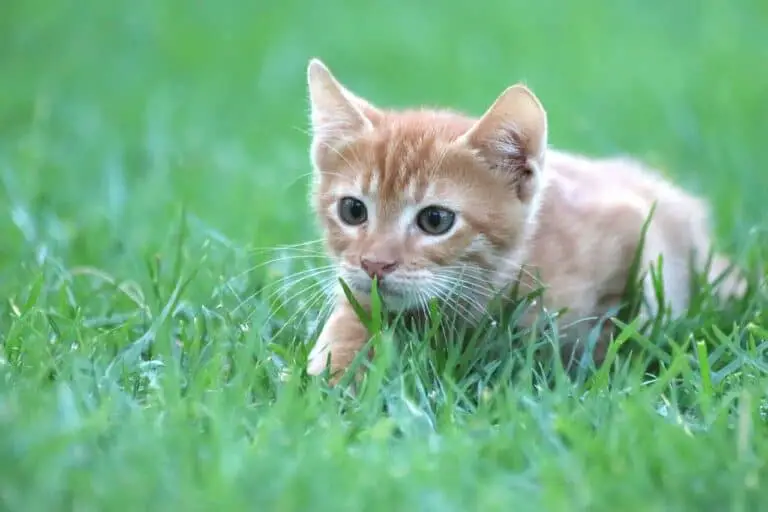IS MOLD DANGEROUS FOR CATS? 3 WAYS MOLD AFFECTS CATS
Is mold dangerous for cats? Mold harms people due to its spores, and since cats can inhale those spores too, they are also paying the consequence of mold exposure.
Mold is dangerous for cats because it can create many respiratory problems, gastrointestinal issues, and allergic reactions. In some cases, after exposure to certain types of mold, the consequence can be even death.
In the following sections, I’m going to cover three ways mold is dangerous for cats, along with steps you should take if you suspect that your cat has been exposed to mold.
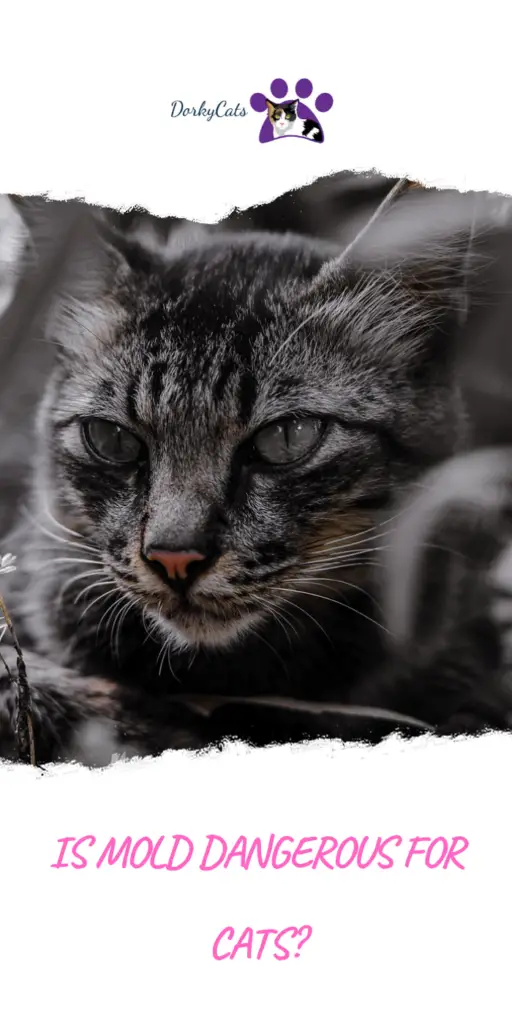
WHAT IS MOLD?
Mold is a fungus that grows in wet areas or places with a lot of moisture. It can quickly grow outdoor but also indoors in places such as water pipes, shower rooms, near air conditioners, basements, under the roof, and similar areas.
Mold is dangerous because it produces tiny and invisible spores into the air that humans and pets can inhale. When it happens, the spores can create irritations, allergies, and a variety of illnesses.
One of the worse types of mold is the black mold which can create even more severe problems.
HOW IS MOLD DANGEROUS FOR CATS?
Is mold dangerous for cats? It can be. Mold is potentially hazardous for humans. It also poses a risk to dogs, cats, and other animals.
There are a few different ways in which mold can pose a threat to your feline friend. The first is inhalation risk.
BREATHING SPORES
Mold can grow basically anywhere your cat spends time, like their favorite napping spot, in the walls or floors of your house, or even where you store the cat food. Mold spores are tiny and invisible to the naked eye, which means any animal, including cats, can quickly inhale them.
If a cat inhales mold spores, it could develop respiratory issues. Symptoms of mold inhalation include:
- Rapid breathing
- Coughing
- Sneezing
- Bleeding from the nose or mouth
- Watery eyes
- Fur loss
- Vomiting
- Gastrointestinal problems
- Allergies
2. MOLD INGESTION
Another risk is the ingestion of mold. This could happen if your cat’s paws come into contact with mold and then he or she bathes itself. It’s also possible that mold could grow in your cat’s food supply.
If a cat ingests mold, he or she could develop digestive issues and damage to the gastrointestinal tract. Symptoms of mold ingestion could include loss:
- Loss of appetite
- Vomiting
- Diarrhea
- Lethargy
- Blood appearing in stool or vomit
3. SKIN EXPOSURE TO MOLD
Finally, it’s also possible that your cat could suffer from mold exposure even if he or she doesn’t inhale or ingest mold spores. Some cats have sensitive skin and allergies to a wide range of elements. Mold is a common allergen, not just for cats but also for humans.
A mold allergy can result in many of the same symptoms as inhalation or ingestion and lead to skin irritation and loss of fur. If the allergy is severe, prolonged exposure could lead to nervous system damage, strokes, and even death.
BLACK MOLD SYMPTOMS IN CATS
The symptoms of black mold in cats are similar to those created by other types of mold, but black mold is poisonous to cats. Cats inhaling it gets poisoned and eventually can die from it.
You can see your cat having the following symptoms:
- Coughing
- Wheezing
- Red or tearing eyes
- Lack of energy
- Suppress a cat’s immune system making him sick
- Lungs internal bleeding
Black mold spores get into the cat’s lungs and break the capillaries, creating bleeding, pulmonary hemorrhage, and, unfortunately, death.
The way to prevent all of this from happening is to make sure the house is free of mold and use an air dehumidifier to lower the moisture levels in the air and prevent mold formation.
Here are some excellent air dehumidifiers you can use:
Table could not be displayed.TIPS TO PROTECT YOUR CAT FROM MOLD DANGERS
Mold is a natural element that can occur in any household. One of the best ways to protect your cat from mold is to minimize the threat of mold in your home.
You can do this by keeping a clean home and eliminating entry points for moisture into your walls, windows, doors, etc. If you find mold, clean it quickly and identify the source to resolve the situation.
If your cat shows mold symptoms, you may want to get him or her checked by a vet. Some of the symptoms of mold are also symptoms of other ailments. Even if your cat has not been exposed, the symptoms are usually worth being checked by a veterinarian.
If your cat inhales or ingests mold, the veterinarian could take a range of steps to resolve the issue, depending on the severity. If your cat is allergic to mold, he or she may need to take medication to reduce the risk.
Worried about whether mold is dangerous for cats? Take steps to minimize mold in your home, and you can protect your cat. And if you identify possible mold symptoms, seek an exam by a vet as soon as possible.
HOW TO TREAT MOLD EXPOSURE IN CATS
Cats can be treated in several ways once they are diagnosed to have been exposed to mold. Vets can give cats oral remedies such as antifungal drugs, topical sinus medication, which is a little invasive for cats, gastric lavender, and fluid therapy if necessary.
If treated early on, the chances are that there are no permanent damages to the cat’s body, and your feline can recover fully.
FREQUENTLY ASKED QUESTIONS
Is treating black mold in cats possible?
Treating black mold is possible for cats if it is done early on. However, cats that get exposed to it over a long period have more chances to get more severe consequences.
Can black mold kill cats?
Black mold can kill cats if no treatment or action is taken in the earlier stages. However, it can also be treated successfully if a cat is brought to the vet in time.
The cat drank moldy water; what to do?
If your cat drank moldy water, you should get veterinarian assistance as soon as possible so that your cat can get medications and the necessary treatments.


